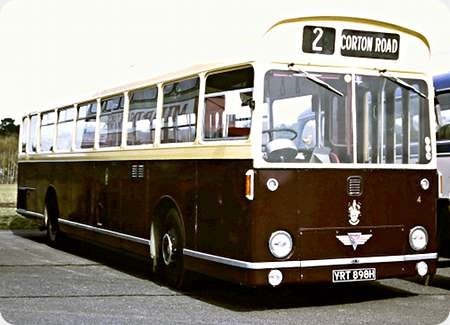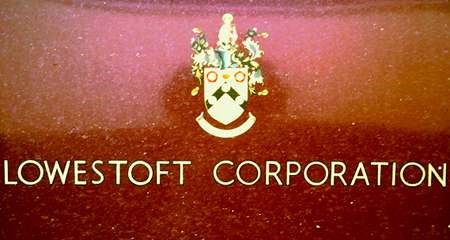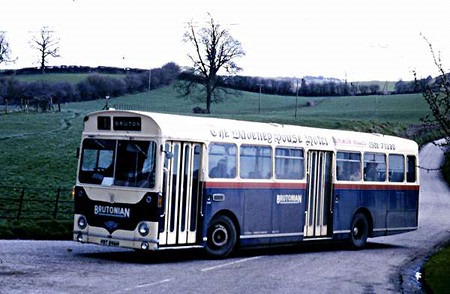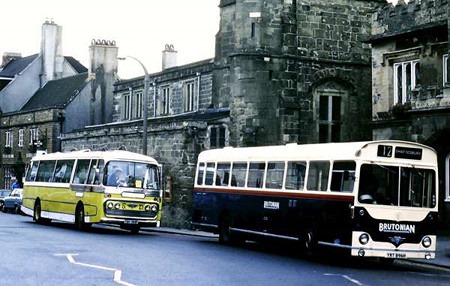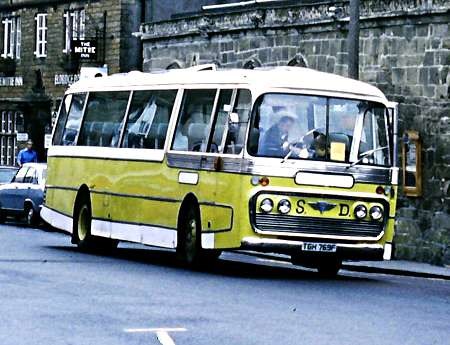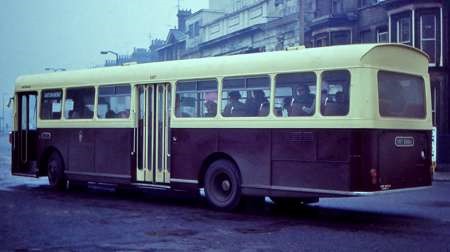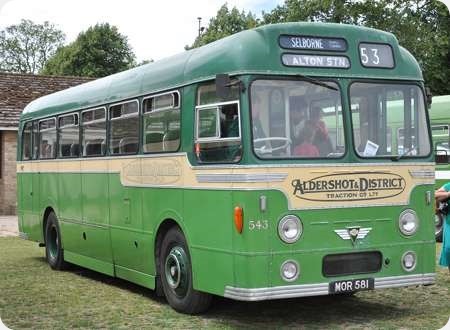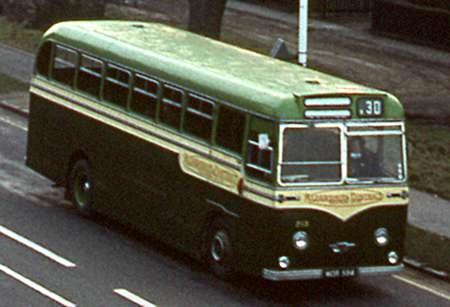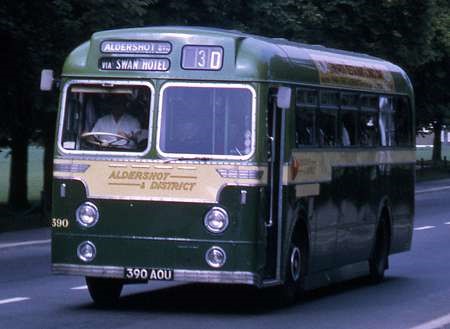London Transport – AEC Regal IV – UMP 227
London Transport
1949
AEC Regal IV
Park Royal B40F
I have submitted this vehicle under the London Transport heading as it is in ‘Country Area’ green and carries the London Transport fleetname. It is an AEC Regal IV with Park Royal B40F body, new as an AEC Demonstrator in 1949. Neither the Jenkinson list of 1978 nor the PSVC list of 2012 gives it a model number. It now forms part of the collection at Brooklands, where we see it (newly restored) on 13 April 2014.
Photograph and Copy contributed by Pete Davies
10/02/17 – 07:04
Looking through the driver’s windscreen this bus seems to have the later control binnacle beneath the steering wheel as produced for the Regent V/Reliance from around 1960. It also looks to have the Monocontrol semi-auto gearchange on the side of it. Was this original or has it been modified at some stage?
Philip Halstead
10/02/17 – 07:05
When this vehicle was constructed in 1949 the maximum permissible length for a single decker was 27ft 6ins. This one and its left hand drive counterpart, together with the 25 private hire examples of the LT RF class were the only Regal IVs built to that length. After serving as a demonstrator with London Transport at St Albans, and then with others including SMT, UMP 227 went back to AEC as a works hack, where it managed to survive into preservation. The bodywork styling is clearly related to the immediate pre war LT Chiswick and Park Royal built buses of the Q, TF and CR classes.
Roger Cox
According to Alan Townsin’s book ‘Blue Triangle’, there were two Regal IV prototypes – as Roger has mentioned – both with Park Royal bodies. UMP 227 was finished in green livery as seen in Pete’s photo, and the other – a left hand drive version – wore a blue livery and went to Holland for a time before returning and being sold around the mid-1950s. (Sadly where it ended up is not stated). The author states that the prototypes "had chassis numbers in the U series of numbers used for experimental parts, a practice that became usual for subsequent prototypes or experimental vehicles, though the production type numbers were 9821E and 9831E for right and left hand versions". UMP 227’s chassis number is given as U135974, but that of the left hand drive prototype is not mentioned.
Philip, the same source describes the Regal IV as having a "horizontal A219 version of the 9.6 litre engine and air-operated preselective gearbox, and air pressure brake operation". I would hazard a guess – a foolish thing to do on this well-informed website I know! – that the ‘Monocontrol’ semi-automatic gearchange binnacle you mention may well have been fitted during UMP’s subsequent life as an AEC Experimental Department hack.
Brendan Smith
11/02/17 – 06:38
Philip, I’ve just had a look on the London Bus Museum website, which states that UMP227 was "originally fitted with air-operated pre-select gearbox, later fitted with mono control (sic) with overdrive on 3rd and 4th gears". Well spotted that man!
Brendan Smith
11/02/17 – 06:39
UMP 227 does indeed have Monocontrol transmission.
Mark Evans
12/02/17 – 07:14
Regarding the second prototype fitted out as left hand drive I have a very vague recollection of seeing a photo somewhere, I know not where, of it being used as a roadside café somewhere in the south of England.
I am probably totally wrong and having a senior moment if so I apologise in advance.
Diesel Dave
12/02/17 – 07:17
I see distinct similarities to the 1950 AEC Regal IV/Park Royal demonstrator VMK 271, which ended up on the Isle of Man as Douglas Corporation no. 31.
Petras409
19/02/17 – 07:34
In Gavin Booth’s book "British Buses In Colour" (Ian Allen 1996) there is a picture of Douglas Corporation No. 31, NMN 355 mentioned by Petras409. As he suggests, this was VMK 271, the other 27ft 6in Regal IV AEC demonstrator dating from 1950, originally built with left hand drive. It passed to the Isle of Man in 1951 and stayed there until 1974 when it was sold to Manx Metals for scrapping. A working life of 24 years is pretty good for a prototype, and testifies to the rugged reliability of the Regal IV, borne out by the long lives of the members of the LT RF class.
Roger Cox
29/05/18 – 06:41
The LHD prototype Regal IV did indeed finish up as a roadside café in the 1950’s, at Hindhead Surrey in a wooded car park just off the A3. My family regularly stopped there for refreshments at my insistence to look at a bus so different to anything else around. Suddenly one day it had gone, a sad day for a (then) youngster!
Peter Burton
Quick links to the - Comments Page - Contact Page - Home Page

